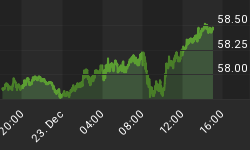On June 10, I mentioned that in terms of the level of mortgage rates, the sale price of houses and the income of families, the affordability of home purchase of late is higher than it has been in about 40 years (see Chart 1). With Thursday's release of flow-of-funds data by the Fed, I can demonstrate yet another factor suggesting the current attractiveness of a home purchase - the implicit yield on owner-occupied housing in relation to the cost of financing a house purchase. I calculate the implicit yield on owner-occupied housing by dividing the "space rent on stationary owner-occupied housing" (from unpublished GDP data pertaining to personal consumption expenditures) into the market value of household real estate (from the household balance sheet data in the Fed's flow-of-funds accounts). Then I compare this implicit yield on owner-occupied housing with the level of mortgage rates pertaining to the sales of existing single-family homes. Chart 2 shows a history of this calculated implicit yield on housing and the financing or mortgage rate.
Chart 1
Chart 2
In the first quarter of 2009, the implicit yield on owner-occupied housing was 6.02%; the contract mortgage rate was 5.07%. The data in Chart 2 show that it is rare for the implicit yield on housing to be above the cost of financing a house. In fact, from the late 1960s until now, the implicit yield on housing has always been below the mortgage rate. Of course, the factor that has driven up the implicit yield on houses has been the recent extraordinary decline in real estate values rather than an extraordinary increase in "space rent" on owner-occupied housing (see Chart 3). This is not to say that the implicit yield on housing will not move higher over the remainder of this year, especially if residential real estate values continue to fall, as I expect they will over the rest of this year. But mortgage rates already have moved higher in recent weeks. In sum, the higher relative implicit yield on owner-occupied housing is yet one more positive element arguing in favor of the bottoming of housing demand.
Chart 3
Yes, Treasury Borrowing is Massive, But What About Total U.S. Borrowing?
In the four quarters ended Q1:2009, federal government borrowing has averaged approximately $1.5 trillion at an annual rate. Whew! This compares with average federal borrowing of only $273 billion annualized in the four quarters ended Q1:2008. But what has happened to nonfederal domestic borrowing? It has gone from an average $2.1 trillion annualized in the four quarters ended Q1:2008 down to only $291 billion in the four quarters ended Q1:2009 (see Chart 4). So, although Treasury borrowing has skyrocketed in the past four quarters, total domestic nonfinancial borrowing has slowed from a four-quarter moving average of $2.4 trillion in Q1:2008 down to $1.8 trillion in Q1:2009 - the slowest rate of total borrowing since Q3:2004 (see Chart 5).
Chart 4
Chart 5
Similarly, although Federal Reserve credit creation has soared in the past year, private financial sector credit creation has plunged (see Chart 6). Before one gets too worked up about Treasury borrowing and Fed credit creation, one has to take into consideration how much private nonfinancial sector borrowing and private financial sector credit creation have slowed.
Chart 6
Global Economic Data

Historical US Economic Data
















